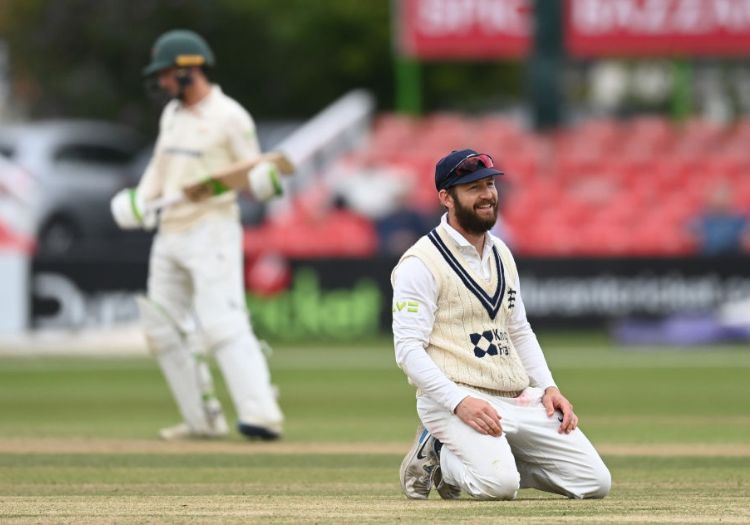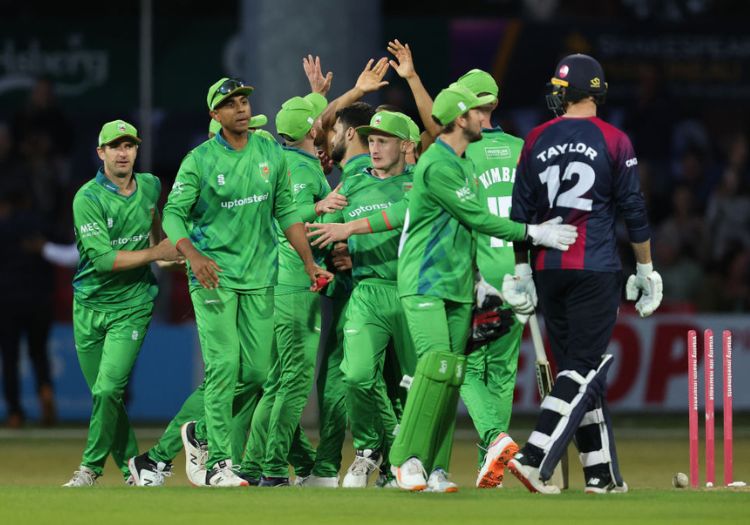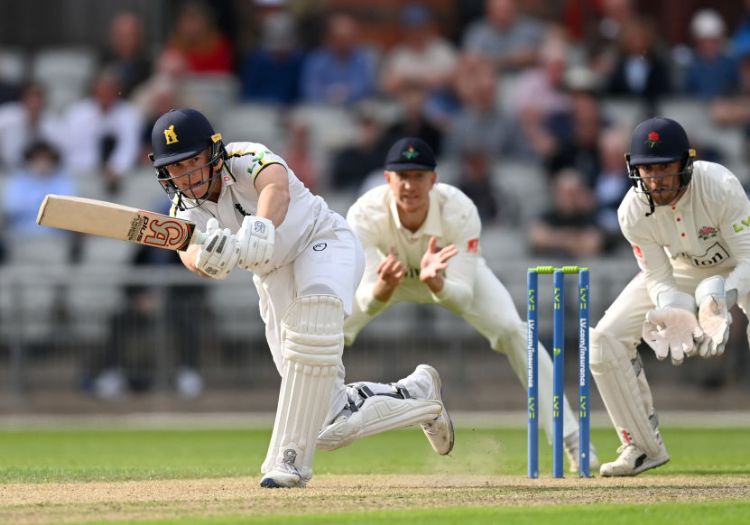SAM MORSHEAD goes through the ECB's high-performance review findings and proposals and looks at what it could mean for the game, and how they might be received

The ECB's high-performance review has made 17 concrete proposals for the English game to consider, in a bid to improve the quality of both the domestic structure and the men's national side.
The review panel, chaired by former England captain Sir Andrew Strauss, published its final report on Thursday (September 22), following a nine-month investigation and consultation process.
In it are recommendations which touch on almost every element of the sport at a professional level in England and Wales, from the number of matches played by each county in each format to the pathway structures from under-17 level up, to the use of a Kookaburra ball and the trial of a bonus-points system to assess pitch preparation.
The release of the review's findings comes following input from players and the Professional Cricketers' Association, directors of cricket and senior coaching staff from across the county network, as well as chief executives and chairs around the country.
The results of the Cricket Supporters' Association's annual survey, which polled around 3,700 respondents, were also taken into consideration.

The ECB's high-performance review panel have published proposals for the future of the game [Getty Images]
While much of what was formally presented on Thursday has already been mooted publicly, or discussed as a possibility in the media, this represents the first occasion the review has officially stated its proposals.
The majority of the suggestions will be tabled to the ECB board for debate and possible implementation, while those relating to the future structure of the county game - relegation and promotion issues, the number of matches and so on - are required by the governing body's constitution to go to a vote, at which a two-thirds majority of the 18 first-class clubs is required for any changes to be passed.
That process, and the proposals at the heart of them, will undoubtedly grab many of the headlines - especially those relating to a reduction in the number of T20 Blast and County Championship matches. However, there are other elements to the review which could have a significant impact on the development of English cricketers in the future.
Here, The Cricketer breaks down the reviews proposals one by one.
1 - Create accountability for men's high performance
The panel identifies a lack of defined accountability at senior management level for the performance of the England team, and proposes the introduction of a high-performance non-executive director onto the ECB board, as well as the creation of an advisory panel - made up of individuals from outside cricket - to advise the existing performance advisory group (which currently oversees this area).
2 - Improve our shared understanding of "What It Takes To Win" (WITTW)
"What It Takes To Win" might sound like a self-published self-help pamphlet but it is increasingly important in the realm of professional sport, and incorporates a wealth of information: from performance data to pathway strategy, sports psychology, understanding of environments, best-case preparation, nutrition, diet, media exposure and much more. It is a big part of the review's thinking.
The panel's second proposal outlines the importance to establish deeper WITTW research for elite red and white-ball cricket, including "broadening the analysis of the physical and psychological factors that predict how well a player may peform".
It's heady stuff, and perhaps beyond you or I. But it's worth listening to.
Within it, the review proposes the introduction of mobile ball-tracking technology across the county game, to achieve objective assessment of all players. In theory, acquisition of a standardised pool of data would dilute favouritism, nepotism or allegations of "jobs for the boys".
The panel also says the coaching curriculum should be updated following additional WITTW research, to ensure those being trained via ECB courses are being given the same base from which to assess and develop players.
The panel says WITTW research within cricket "has not had a widespread implementation across the game, and requires both updating and broadening to get a holistic view of what skills and attributes players and teams need to succeed both at international and domestic level".
3 - Foster a high-performance community
While the title would apparently be pretty obvious, the panel's third proposal is attached to WITTW suggestions from proposal two.
It discusses the need to have formally established ties between head coaches, directors of cricket, head groundstaff and others involved in developing cricket in this country.
An "annual performance summit" - a meeting of minds between leaders in the international and domestic games - is proposed.
"While there will always be competitive tension in any sport, leaders in performance roles recognise the importance of sharing ideas and best practice to deliver what is best for their players, as well as collectively trying to move forward research and thinking on performance," the review document states.

A total of 17 proposals are in the document [Getty Images]
4 - Develop diverse skills in performance leadership roles
This proposal ties into the existing work the ECB are attempting to implement relating to equality, diversity and inclusivity - a programme spawned by the racism crisis in the domestic game.
It pushes an increase in diversity of those holding positions in the high-performance arena in English cricket.
Most interestingly, it calls for ECB coaches to receive leadership training in addition to the other skills taught in classrooms.
Citing the Football Association as a good-practice example (in the interest of fairness, the FA's former technical director Dan Ashworth sat on the review panel), the proposal acknowledges a "lack of diversity in performance roles in cricket" (just one county head coach, Ottis Gibson at Yorkshire, is from a BAME background).
"We must do more to support and champion high potential individuals from all backgrounds who could become future leaders in cricket performance," the review document states.
The panel call for "fairer recruitment practices", too. This could be, for instance, the widespread adoption of the Rooney Rule (the commitment to interviewing a certain number of ethnic minority candidates for positions), which some counties already implement, and the ECB also claims is used in their own hires.
5 - Reward performance impact
Here's where we start to read a bit more into the potential financial implications of the review's proposals.
In point five, the panel suggest that, from 2025, a "significant proportion" of central funding delivered to counties from the ECB should become performance-related.
While a specific formula for how that would work is not produced in the document, the basic premise is to incentivise the production of talent through regional pathways.
The document goes so far as to say that counties not maximising central investment on a performance level should be "challenged" to improve.
Counties get around £4million from the ECB each year, although currently £1.3m of that relates to payments to enable The Hundred and may not be appropriate to be bundled into this element of the discussion.
"Introducing greater performance-related distributions will drive greater alignment throughout the county system on the goals we are seeking to achieve while ensuring that FCCs retain strategic freedom to define and pursue their own purpose/path, and maximising what they are good at," the proposal document says.
6 - Challenge our bowlers to develop their global skills
Though you wouldn't know it from the title, this is all about the Kookaburra ball.
There's a lot of data and rationale for this proposal in the document, but most in the game would not need much convincing.
The Dukes ball, currently used in English cricket, does much more in the air and off the wicket and does not encourage raw pace and spin. There is plenty of research to support that statement.
The panel want to see the Kookaburra ball - used in most other nations - implemented for a pilot run to gather data on how it impacts the use of spinners, the prominence of lower-pace seamers, and the balance between bat and ball.

The review was tasked with providing a blueprint for future international success [Getty Images]
7 - Give players access to experiences overseas
Another eminently sensible suggestion, and not all that new, includes an annual North v South red-ball series overseas in pre-season, and warm-weather training facilities to be used across the county network.
The ECB last held a North v South event in 2018, though those were white-ball games in Barbados.
8 - Provide earlier international benchmarking
Very simple: the review panel wants to see the introduction of a full England Under-17s programme, extending the development pathway.
It cites the successes of the FA in improving its pathway programmes from 2012, leading to victories in the 2017 Under-17 and Under-20 World Cups, and the subsequent transition of those footballers into the national sides which reached the 2018 World Cup semi-final and Euro 2020 final.
9 - Refocus the Lions
Yes, points seven through nine could realistically have been bundled together, but there you go.
Refocusing the Lions is all about making the programme - which is effectively England A - more structured.
Player availability (especially with the rise of T20 leagues and the popularity of English cricketers within them), the cricket calendar and the impact of Covid have all contributed to the Lions becoming something of an afterthought in recent years.
The panel, though, insist that it can provide a proper stepping stone into the senior setup. References are made again to our friend What It Takes To Win, while there are suggestions that a revamped domestic schedule will provide windows for players to be more readily available (specifically in August, underneath The Hundred - though more on that later... buckle up).
The Lions should not play T20 cricket, the panel says. Instead, 80 per cent of their time should be focused on the red ball, and a fifth on 50-over cricket.
The Lions should also be playing at the end of September and in June, when there is less County Championship cricket played (according to the panel's schedule proposals). That would mean playing underneath the Blast (June) and England's white-ball internationals (September).
10 - Produce a coherent domestic schedule
This proposal in its entirety: "We are proposing a revised domestic schedule and competition structure which we believe will create a more balanced and coherent schedule for players and fans alike, and result in the best standard and intensity for our competitions in all formats."

The county game needs to be "upgraded" and "intensified", according to the review [Getty Images]
11 - Upgrade the standard and intensity of our competitions
This is where county members' ears prick up, and here is the schedule proposal in a nutshell (much of it already reported by The Cricketer):
County Championship: May through July, and a conclusion in September. Ten games per season (plus the possibility of a playoff between two conference winners to determine promotion). A top tier of six teams, with one team relegated each year, sitting above two conferences of six.
One-Day Cup: The whole thing in April - likely a short group stage followed by straight knockout. The panel say they are "investigating" the inclusion of Minor Counties in an "FA Cup-style competition". But what happens if your team is knocked out early? The panel proposes red-ball friendlies ahead of the first-class season starting in May.
T20 Blast: Late May until late July, primarily on Thursday and Friday evenings, and Sunday afternoons. The proposal would see a return to the days of first-class cricket and white-ball cricket intermingling, rather than being played in specific windows.
The Hundred: Ain't going anywhere. There is a three-week block booked out in the ICC Future Tours Programme for the competition in August and September from 2024, to ensure England's star players are available.
First-class cricket festivals: This is where the sell to members becomes increasingly tricky. The panel debated several options for what should be played alongside The Hundred - they determined the integrity of the Championship would be undermined, but that too great a percentage (52 per cent) of the counties' best white-ball players were missing to The Hundred for the 50-over competition to remain (the research document suggests that 66 per cent of the best 200 English red-ball players were not involved in The Hundred.
The plan is, then, to play regional first-class cricket at outgrounds during this period. The panel proposes a "London Cup", "Roses Test Series" or "West Country Tri Series".
As a commercial concept, these might have some weight - and outground first-class cricket during high summer months is regularly called for by members. But the challenge for the ECB and the counties will be convincing members that these competitions are in fact competitions.
While there are many differences, the way in which football fans lower down the EFL pyramid reacted to the introduction of Premier League Under-23 teams into the Football League Trophy is an interesting case study here - it is not easy to convince fans to watch something that don't want.
Conversely, the development argument is sound - good quality red-ball cricket being played for those players who are generally more red-ball inclined during The Hundred makes sense from a performance position - which, I guess, the review was all about.
The document cites 94 per cent of consulted directors of cricket saying there is too much cricket in the current calendar.
In what feels a little like selective data usage, the only statistic to be included in the document from the Cricket Supporters' Association's survey says 61 per cent of the fans polled believe "the current schedule does not work and there is too much cricket". The caveat there being the same survey generated overwhelming ill-feeling for The Hundred.
On the subject of The Hundred, there is a footnote within the review document which states: "During the course of this review, there has been commentary about whether The Hundred should have been a more prominent part of our work. We have considered the role of The Hundred. The competition has proved its ability to bring new, young audiences to cricket, and its scheduling in the summer holidays is a vital part of this. In addition, feedback from
players rates The Hundred as a premier white-ball competition and we believe its structure and prime time schedule should be protected to retain this position."
Mention of that new audience is a very rare example of the review document veering away from its high-performance mandate and into the realms of commercial, marketing or engagement.
The link between The Hundred and the T20 Blast should be strengthened, the report says, by increasing the number of Wildcard spaces available (these are allocated at the end of the Blast to players who have performed well in that tournament).
The new schedule proposed by the review panel results in a 15 per cent reduction in the total volume of cricket, pretty much all of which comes from cuts to the playing time in April and September.
Okay, that was a long one. Everyone ready to carry on?

England's men can benefit from better competition, scheduling and pitches, the review says [Getty Images]
12 - Incentivise higher quality pitches
The panel want a new, objective pitch review system which is driven by ball-tracking technology (presumably making match referees' opinions less prolific). They want the system to "have teeth" in its ability to reward and penalise counties, and make that process fair on everyone.
A trial of a bonus-points system in the County Championship is proposed as follows:
Loss: 0 points
Draw: 1 points
Win without scoring more than 324 in any innings: 3 points
Win with any score of 325-399 in any innings: 4 points
Win with a score of 400 or more in any innings: 5 points
The panel says "domestic cricket has a higher share of 'green seamers' in which slower seam bowlers can thrive, and cites the Championship having 40 per cent of dismissals achieved via batsmen being bowled or lbw, compared to 35 per cent in Tests in England.
13 - Provide opportunities for talent and reward counties for development
This is all to do with the possible implementation of a "compensation mechanism" (which you or I might like to call a transfer window) for players who are developed at one county then more on to another. There are existing dynamics in place in football, relating to tribunals for players who progress through one club's development programme and then move to another club despite being offered a new contract, which could form the bedrock to this.
"Without sufficient incentive to develop professional cricketers, we risk not making the most of the talent pool we have in England," the report says.
The panel also wants under-21s to be able to move freely on loan between counties, with the parent club picking up the tab.
14 - Sustain an exciting shop window for the game
We're back to our old friend WITTW here. It's all about creating a working environment for cricketers which encourages expression and success, driven by a style of play which generates interest inside and outside the game.
It is a very generic point, which is another of the rare occasions when the review drifts towards commercial, marketing and engagement rather than focusing entirely on high performance.

A revamped Lions setup is also part of the proposals [Getty Images]
15 - Enable players to better manage workloads
While this might initially seem to be about schedule and recovery time, it is actually about central contracts - and quite a big deal.
The review is keen for a reformed retainer and match fee system, which will reward elite players playing for England - and ensuring they are adequately compensated if they turn down lucrative overseas franchise contracts to do so.
As the report document notes, this is no simple task - any changes to the central contract model need to be agreed with Team England Player Partnership, an arm of the PCA.
16 - Improve physical and pyschological resilience
The panel calls for the introduction of a "digital athlete monitoring system" to give coaches and medical staff a full assessment of a player's fitness and state of mind.
"We need to look after the welfare of players and minimise injuries by offering them the best standards of care, as well as ensure that our players can peak at the right moments."
The number of England fast bowlers who have broken down in recent years would be an interesting place for this element of the review to start.
17 - Schedule international matches to allow players to play their best cricket, more often
Nearly there, well done for sticking with us.
"We can support our biggest stars and support staff further by looking at how our international matches are scheduled in our season, and how they can dovetail further with the domestic schedule," the report says.
This final proposal comes at the end of a year when players have routinely been withdrawing from tournaments and series to protect their mental health, or because the physical strain has become too much.
Ben Stokes used his ODI retirement to make the analogy of cricket administrators looking at players like cars they could simply refuel and set out on the road again.
Most in the game would agree the current schedules - still in part impacted by Covid hangovers - are unsustainable. But someone has to make the first move to change that.
The panel state that there should be a specific steering group, incorporating commercial and operations teams, and the England captains and coaches, who meet to discuss the calendar. It feels like the panel is proposing a sort of mediation meeting, where compromise is the buzzword.
This is key: "Build domestic schedules that enable Test players to play first-class cricket around Test matches, and whiteball specialists to be able to play both international white-ball cricket and major domestic white-ball cricket during the English summer," the review document says.
That means Ben Stokes and Joe Root playing for Durham and Yorkshire in May, and Jos Buttler and Liam Livingstone playing for Lancashire Lightning in July. It would go some way to appeasing county supporters who have been increasingly turned off by the treatment of their favoured domestic competitions in recent years.